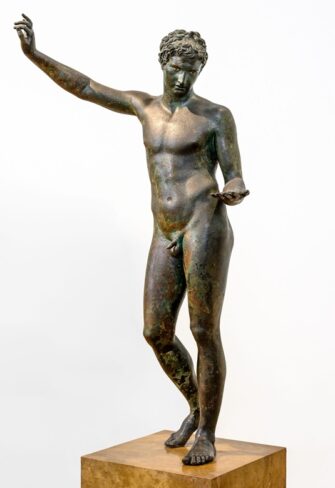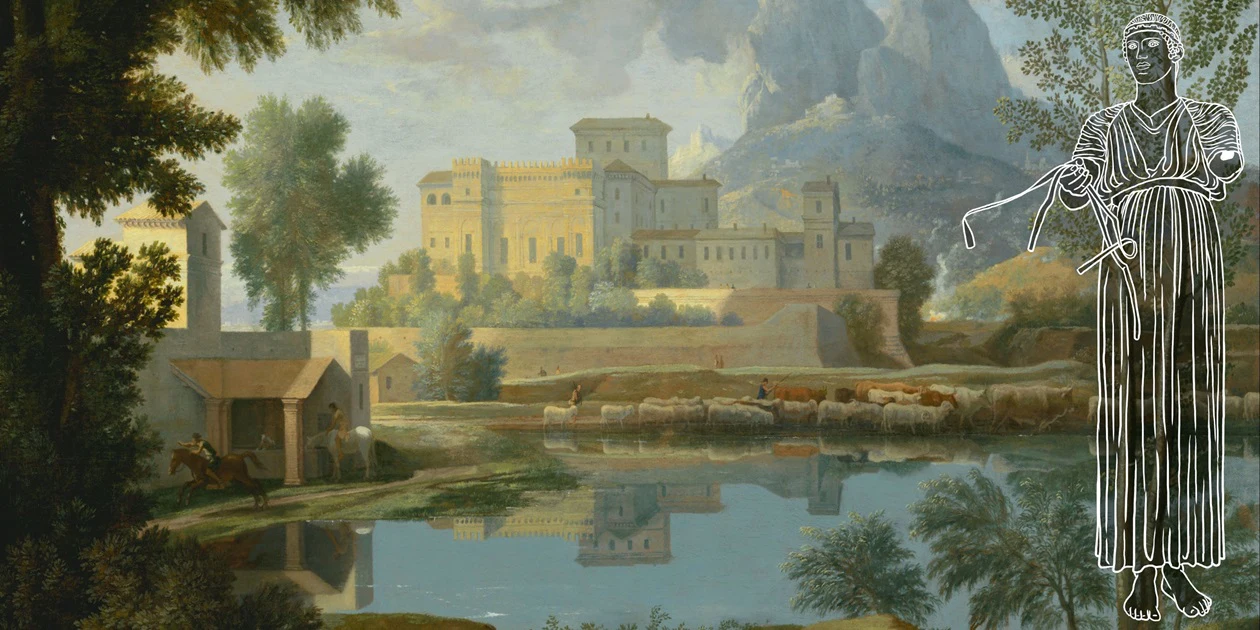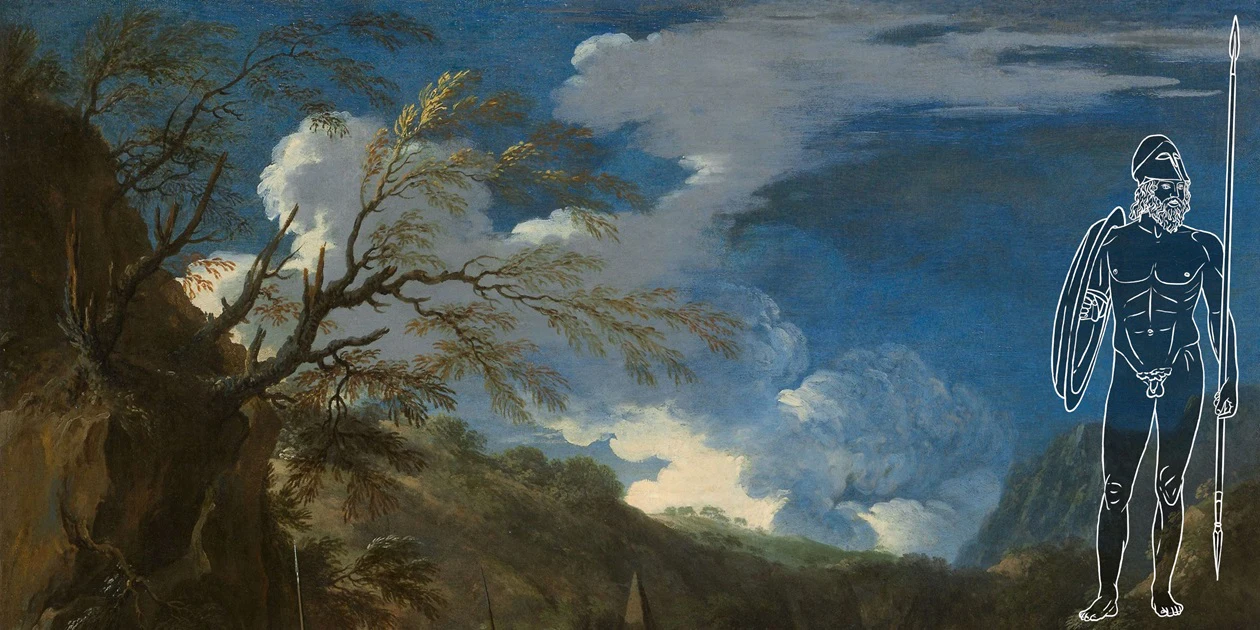Greek Originals
Showing all 12 results
-
Hellenistic Prince
£52,900.00 -
Boxer at Rest
£52,900.00 -
Artemision Bronze
£52,900.00 -
The Rampin Rider
£11,300.00 -
Riace B Frankfurt Edition
Please contact us for a quotation -
Riace A
Please contact us for a quotation -
Riace B
Please contact us for a quotation -
Jockey of Artemision
£164,100.00 -
Croatian Apoxyomenos
£52,900.00 -
Charioteer of Delphi
£52,900.00 -
Riace A Frankfurt Edition
Please contact us for a quotation -
Marathon Boy
Please contact us for a quotation
The Nine Original Ancient Greek Bronze Statues – Blueprints for Bronze Casting Replicas
From the vast array of bronze statues from ancient Greece, only nine grand bronzes have survived in their original form. This lends these nine bronze statues fundamental and unparalleled significance. In each of these sensational, one-of-a-kind statues, the light and splendour of ancient Greece shine forth, unadulterated, directly upon us, the beholders – in their original state.
These statues are: The Poseidon of Cape Artemision aka Artemision Bronze, the Delphic Charioteer, the Boxer at Rest, the Thermes Ruler aka Hellenistic Prince, the Jockey of Artemision, the two Riace bronze statues: Riace A and Riace B, the Marathon Boy, and the Croatian Apoxyomenos. In our online shop, you can purchase the nine ancient Greek bronze statues reproduced as life size bronze casting replicas. Whether the Hellenistic Prince, the Jockey of Artemision, the Youth of Marathon, or the Croatian Apoxyomenos, a bronze statue of these ancient artworks enriches any estate. We ensure the production of bronze replicas in museum quality.
The Thermes Ruler: Purchase a 204 Centimetre High Bronze Cast Statue
The statue is known by several names, including Hellenistic or Seleucid Prince.
Height: 204 centimetres without spear.
Date of Origin: Created in the 2nd century BCE during the Hellenistic period.
Material: Made of bronze.
Current Location: The statue is located in the collections of the Palazzo Massimo alle Terme in Rome, Italy.
Description: The statue depicts a noble or royal figure, often identified as a prince or ruler, due to their regal appearance and posture. The figure is depicted standing upright, exuding authority and self-assurance. The facial features are finely detailed, and the posture of the figure exudes a sense of power and sophistication.
The Boxer at Rest
Description: This statue depicts a weary and aged athlete, exhausted after a boxing match.
Time of Origin: Hellenistic period, probably 3rd century BCE.
Discovery Location: Discovered in 1885 in the ruins of the Roman Baths of Constantine in Rome.
Material: Bronze
Dimensions: The statue is approximately 1.48 meters tall.
Current Location: The statue is part of the permanent collection of the Capitoline Museums in Rome.
The Charioteer of Delphi as a Bronze Casting Sculpture for Private Ownership
Description: This statue depicts a young charioteer, presumably celebrating victory at the Pythian Games.
Time of Origin: Classical Greek period, dated to around 470-460 BCE.
Discovery Location: Discovered in Delphi, Greece, in 1896.
Material: Bronze with traces of silver
Dimensions: The statue is approximately 1.80 meters tall.
Current Location: The statue is part of the permanent collection of the Archaeological Museum of Delphi.
The Poseidon or Zeus of Cape Artemision aka Artemision Bronze
Description: This statue either depicts the sea god Poseidon – once holding a trident – or it portrays the sky god Zeus, once holding a lightning bolt.
Time of Origin: Classical Greek period, dated to around 460-450 BCE.
Discovery Location: Discovered in 1926 in the sea off Cape Artemision, Greece.
Material: Bronze
Dimensions: The statue is approximately 2.09 meters tall.
Current Location: The statue is part of the permanent collection of the National Archaeological Museum of Athens.
The Jockey of Artemision – Original Plaster Cast for the Statue
Description: This statue depicts a young, very small rider, known as a jockey, sitting on a racehorse about to jump.
Time of Origin: Classical Greek period, dated to around 140-30 BCE.
Discovery Location: Discovered in 1928 in the sea off Cape Artemision, Greece.
Material: Bronze
Dimensions: The statue is approximately 2.10 meters tall.
Current Location: The statue is part of the permanent collection of the National Archaeological Museum of Athens.
The Riace Bronzes: Bronze A
Description: This statue, also known as the “Warrior of Riace,” depicts a nude man.
Time of Origin: Classical Greek period, dated to around 460-450 BCE. The depicted figure could be the Athenian king Erechtheus. Erechtheus, which translates as “Earthshaker,” is a mythological king of Athens and the founder of this polis. He engaged in a famous duel with the Thracian king Eumolpus.
Discovery Location: Discovered in 1972 in the sea off Riace, Calabria, Italy.
Material: Bronze
Dimensions: The statue is approximately 2.09 meters tall.
Current Location: The statue is part of the permanent collection of the Museo Nazionale della Magna Grecia in Reggio Calabria.
The Riace Bronzes: Bronze B
Description: This statue, also known as the “Warrior of Riace,” depicts a nude man.
Time of Origin: Classical Greek period, dated to around 460-450 BCE. The depicted figure could be Eumolpus. Eumolpus, which translates as “Beautiful Singer,” is a Thracian king who immigrated to Eleusis. He engaged in a duel with the Athenian king Erechtheus. His parents are the sea god Poseidon and his wife Chione. Eumolpus was equally famous as a warrior, priest of Demeter, and singer.
Discovery Location: Discovered in 1972 in the sea off Riace, Calabria, Italy.
Material: Bronze
Dimensions: The statue is approximately 2.09 meters tall.
Current Location: The statue is part of the permanent collection of the Museo Nazionale della Magna Grecia in Reggio Calabria.
The Marathon Boy
Description: This statue depicts a young athlete, possibly a winner of the marathon races of the Panathenaic Games.
Time of Origin: Classical Greek period, dated to around 340-330 BCE.
Discovery Location: Discovered in 1925 in Marathon, Greece.
Material: Bronze
Dimensions: The statue is approximately 0.86 meters tall.
Current Location: The statue is part of the permanent collection of the Archaeological Museum of Athens.
The Croatian Apoxyomenos – Purchase a 192 Centimetre High Bronze Sculpture
Description: This statue depicts an athlete cleaning himself with a scraper (apoxyomenos) after training.
Time of Origin: Hellenistic period, dated to around the 2nd or 1st century BCE.
Discovery Location: Discovered in 1996 in Mali Lošinj, Croatia.
Material: Bronze
Dimensions: The statue is approximately 1.92 meters tall.
Current Location: The statue is housed in a museum specially dedicated to it in the Kvarner Palace in the city center of Mali Lošinj, Croatia. A replica, depicting the original find situation, is on display at the Museum Kula in the town of Veli Lošinj.


























